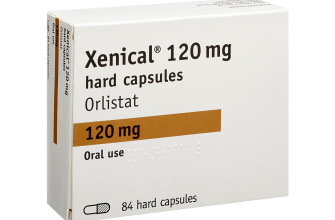Facing secondary infertility can be incredibly challenging. If you’re considering Clomid, understand this: it’s a powerful medication, and its effectiveness varies greatly depending on individual circumstances. Successful treatment often involves a tailored approach, combining Clomid with lifestyle adjustments and close monitoring by your fertility specialist.
Clomid stimulates ovulation by increasing your body’s production of follicle-stimulating hormone (FSH) and luteinizing hormone (LH). This increase can lead to the release of multiple eggs, improving your chances of conception. However, remember that Clomid doesn’t guarantee pregnancy; it boosts the odds. Your doctor will conduct thorough testing to identify any underlying issues affecting your fertility before recommending a Clomid regimen.
Expect regular monitoring during your Clomid treatment cycle. Ultrasound scans will track follicle development, and blood tests will measure hormone levels. This close monitoring allows your doctor to adjust your dosage and optimize your chances of a successful outcome. Open communication with your healthcare provider is absolutely key – don’t hesitate to discuss any concerns or side effects you experience.
While Clomid is generally well-tolerated, possible side effects include hot flashes, mood swings, and ovarian hyperstimulation syndrome (OHSS), a rare but serious condition. Early detection and management of OHSS are crucial; therefore, consistent communication with your doctor is vital. Beyond medication, focus on improving your overall health through regular exercise, a balanced diet, and stress management techniques. These lifestyle changes can significantly impact your fertility prospects.
- Secondary Infertility and Clomid
- Understanding Secondary Infertility
- Clomid: Mechanism of Action and How it Works
- Who is a Candidate for Clomid Treatment?
- Specific Factors Doctors Consider
- Success Rates and Potential Risks of Clomid
- Factors Influencing Success
- Potential Risks
- Important Note:
- Dosage and Treatment Protocols for Clomid
- Common Side Effects of Clomid Treatment
- Alternatives to Clomid for Secondary Infertility
- Monitoring and Follow-up During Clomid Treatment
Secondary Infertility and Clomid
Clomid, or clomiphene citrate, stimulates ovulation. If you’re experiencing secondary infertility, your doctor may prescribe it after investigating other potential causes.
Before starting Clomid, expect thorough testing. Blood tests assess hormone levels, and ultrasounds check follicle development. Your doctor will determine the appropriate dosage, typically starting with 50mg daily for 5 days, and adjusting based on your response.
Common side effects include hot flashes, mood swings, and ovarian cysts. These are usually manageable, but you should report any significant discomfort to your doctor immediately. Multiple pregnancies are a possibility with Clomid; your doctor will monitor this closely.
Clomid’s success rate varies. Factors influencing success include age, underlying causes of infertility, and individual response to medication. While it improves chances of conception, it’s not a guaranteed solution. Most patients see results within the first three cycles, but some may require longer treatment or alternative approaches.
If Clomid isn’t effective after several cycles, your doctor might recommend other fertility treatments, such as intrauterine insemination (IUI) or in-vitro fertilization (IVF). Open communication with your doctor is key to developing the best treatment plan for your individual needs.
Remember, seeking timely medical advice is crucial. Early intervention increases the chances of successful pregnancy.
Understanding Secondary Infertility
Secondary infertility means you’ve conceived successfully before but are now struggling to get pregnant again. About 10-20% of couples experience this. This isn’t your fault; many factors contribute.
Age plays a significant role. As you age, your ovarian reserve (number of eggs) declines, reducing your chances of conception. After age 35, the likelihood of secondary infertility increases substantially.
Lifestyle choices significantly impact fertility. Smoking, excessive alcohol consumption, and obesity reduce fertility potential. Maintaining a healthy weight and avoiding these habits improves your chances.
Previous pregnancies and deliveries can influence future fertility. Complications like pelvic inflammatory disease (PID) or uterine scarring can hinder your ability to conceive. Discuss your medical history thoroughly with your doctor.
Underlying medical conditions, such as endometriosis, polycystic ovary syndrome (PCOS), or thyroid problems, can affect fertility. Regular check-ups are key to early detection and management.
Male factor infertility should not be overlooked. Even if you conceived before, a male partner’s sperm quality or quantity may have changed. A semen analysis is crucial for evaluating male fertility.
Seek professional help. Don’t wait. Consult a fertility specialist. They can conduct thorough assessments, identify potential causes, and recommend appropriate treatments, including Clomid, if necessary. Early intervention often yields better outcomes.
Clomid: Mechanism of Action and How it Works
Clomid, or clomiphene citrate, works by blocking estrogen receptors in the hypothalamus and pituitary gland. This blockage tricks your body into thinking estrogen levels are low. In response, your pituitary gland releases more follicle-stimulating hormone (FSH) and luteinizing hormone (LH).
Increased FSH stimulates the ovaries to produce multiple follicles, each containing an egg. Higher LH levels trigger ovulation, the release of the mature egg from the follicle. This increased egg production and ovulation improves your chances of conceiving.
Specifically, Clomid’s action on the hypothalamus and pituitary gland leads to a rise in GnRH (gonadotropin-releasing hormone), ultimately boosting FSH and LH production. This hormonal cascade is key to its fertility-enhancing effects.
Remember, while Clomid increases the likelihood of ovulation, it doesn’t guarantee pregnancy. Your doctor will monitor your response to Clomid through blood tests and ultrasounds to adjust dosage and ensure safe and effective treatment.
Side effects can include hot flashes, mood swings, and ovarian hyperstimulation syndrome (OHSS) in some cases. Open communication with your doctor about any concerns is paramount.
Who is a Candidate for Clomid Treatment?
Generally, women with unexplained infertility, or those diagnosed with anovulation (lack of ovulation), are primary candidates. Clomid also helps women with mild to moderate endometriosis or PCOS (Polycystic Ovary Syndrome) increase their chances of conceiving.
Specific Factors Doctors Consider
Your doctor will assess several factors before recommending Clomid. These include your age, overall health, history of miscarriage, and the results of your fertility tests. A thorough evaluation of your reproductive system is vital. They’ll consider your fallopian tube health and your partner’s sperm count and motility. Past treatment attempts and response will inform the decision, as will your desire for twins or higher-order multiples (which Clomid can slightly increase the risk of).
Women with severe ovarian dysfunction, a history of ovarian cysts, unexplained pelvic pain, or uterine fibroids may not be suitable candidates. Additionally, women with certain liver or visual problems or a history of hormone-sensitive cancers should not use Clomid.
Success Rates and Potential Risks of Clomid
Clomid’s success rate in achieving pregnancy varies significantly depending on factors like the cause of infertility, woman’s age, and overall health. Studies show a pregnancy rate ranging from 5% to 25% per cycle. Multiple births, however, are a potential side effect; twins occur in roughly 7% of Clomid cycles.
Factors Influencing Success
- Age: Younger women generally have higher success rates.
- Cause of Infertility: Clomid is most effective for ovulation disorders, less so for other infertility causes.
- Duration of Treatment: Longer treatment duration may increase chances but also risks.
- Dosage: The optimal dosage is determined by your doctor and may vary.
It’s crucial to remember these are averages, and individual results differ considerably. Your doctor will help determine if Clomid is right for you and discuss realistic expectations.
Potential Risks
While generally well-tolerated, Clomid can have side effects. These are usually mild but warrant attention.
- Ovarian Hyperstimulation Syndrome (OHSS): This is a serious, though rare, complication. Symptoms include abdominal pain, bloating, and nausea. Immediate medical attention is necessary if these develop.
- Multiple Births: As mentioned, Clomid increases the likelihood of twins or higher-order multiples, carrying increased risks for both mother and babies.
- Visual Disturbances: Blurred vision, light sensitivity, or other vision changes should be reported to your doctor immediately.
- Hot Flashes and Mood Swings: These are relatively common and often manageable.
- Vaginal dryness: This is also a potential side effect.
Important Note:
Clomid is a medication, and you should discuss all potential risks and benefits with your physician before starting treatment. They can accurately assess your individual circumstances and tailor a treatment plan accordingly.
Dosage and Treatment Protocols for Clomid
Clomid dosages typically range from 50mg to 150mg daily, taken for 5 days, starting on cycle day 3 or 5. Your doctor will determine the appropriate starting dose based on your individual medical history and response.
Treatment usually begins with the lowest effective dose. If ovulation doesn’t occur, the dose may be increased in subsequent cycles, but rarely exceeds 150mg daily.
Here’s a possible treatment plan outline:
- Cycle 1: 50mg daily for 5 days (days 3-7).
- Cycle 2 (if needed): 75mg daily for 5 days (days 3-7).
- Cycle 3 (if needed): 100mg daily for 5 days (days 3-7).
- Cycle 4 (if needed): 150mg daily for 5 days (days 3-7).
Important considerations:
- Monitoring: Regular monitoring with ultrasound scans and blood tests to track follicle growth and hormone levels is critical. This allows for timely adjustments to the dosage or treatment plan.
- Ovulation prediction: Your doctor will guide you on methods to detect ovulation, such as using ovulation predictor kits (OPKs) or tracking basal body temperature (BBT).
- Multiple pregnancies: Clomid increases the risk of twins or higher-order multiples. Your doctor will discuss this risk with you.
- Side effects: Common side effects include hot flashes, mood swings, headaches, and ovarian cysts. Report any concerning side effects to your doctor immediately.
- Treatment duration: Clomid treatment is typically limited to six cycles. Alternative treatments may be considered if pregnancy doesn’t occur after this period.
Remember, this information is for general knowledge and should not replace personalized medical advice. Always consult your doctor to discuss the best treatment plan for your specific situation.
Common Side Effects of Clomid Treatment
Clomid, while effective for many, can cause side effects. Knowing what to expect can help manage them.
Many women experience hot flashes, similar to those during menopause. These usually subside once Clomid is discontinued.
Ovarian enlargement is another possibility. Your doctor will monitor this through ultrasound scans. Severe enlargement is rare, but requires immediate attention.
Visual disturbances, such as blurred vision or light sensitivity, are also reported. If you experience these, contact your doctor immediately.
Headaches are common, often mild and manageable with over-the-counter pain relievers. If headaches are severe or persistent, consult your doctor.
Nausea and vomiting can occur, though usually mild. Eating smaller, more frequent meals may help.
| Side Effect | Frequency | Management |
|---|---|---|
| Hot Flashes | Common | Often resolves after treatment ends |
| Ovarian Enlargement | Possible | Monitored via ultrasound; contact doctor if severe |
| Visual Disturbances | Less common | Contact doctor immediately |
| Headaches | Common | Over-the-counter pain relievers; contact doctor if severe |
| Nausea/Vomiting | Possible | Small, frequent meals |
Remember, this is not an exhaustive list. Always discuss any concerns or unusual symptoms with your doctor or fertility specialist.
Alternatives to Clomid for Secondary Infertility
If Clomid hasn’t worked for you, several other options exist. Let’s explore them.
Letrozole: This medication, similar to Clomid, stimulates ovulation. Studies show it might be slightly more effective than Clomid for some women experiencing secondary infertility. Your doctor can determine if it’s a suitable choice for you.
Gonadotropins (FSH and LH): These injectable medications directly stimulate the ovaries, providing a stronger impetus for ovulation than Clomid or Letrozole. This is often a next step if simpler options fail. Close monitoring is required due to the higher potential for multiple pregnancies.
Intrauterine Insemination (IUI): This procedure involves placing sperm directly into the uterus, increasing the chances of fertilization. IUI can be combined with ovulation-stimulating medications like Letrozole or gonadotropins to maximize success rates. It’s a less invasive option compared to IVF.
In Vitro Fertilization (IVF): IVF involves fertilizing eggs outside the body and then implanting the resulting embryos into the uterus. It’s a more complex and expensive procedure, typically reserved for cases where other methods have been unsuccessful. Success rates vary depending on individual factors.
Lifestyle modifications: While not a medication, maintaining a healthy weight, managing stress, and addressing any underlying medical conditions can significantly improve fertility. Discuss any relevant lifestyle changes with your doctor.
Surgical Interventions: In some cases, underlying physical obstructions or abnormalities in the reproductive system may be contributing factors to secondary infertility. Procedures like laparoscopy may be necessary to diagnose and correct these issues.
Remember, it’s crucial to discuss these alternatives with your doctor. They can assess your individual circumstances, medical history, and test results to recommend the most appropriate course of action. A personalized treatment plan will optimize your chances of conceiving.
Monitoring and Follow-up During Clomid Treatment
Schedule regular appointments with your doctor for ultrasound scans to track follicle growth. These typically begin around cycle day 10 and continue until ovulation is confirmed. Expect blood tests to monitor estrogen and progesterone levels, guiding optimal timing for intercourse or intrauterine insemination (IUI).
Report any symptoms like severe pelvic pain, bloating, or visual disturbances immediately. These could indicate ovarian hyperstimulation syndrome (OHSS), a serious but rare complication. Your doctor will adjust your dosage or treatment plan accordingly based on your response.
Maintain a detailed record of your basal body temperature (BBT) and any other relevant symptoms to help pinpoint ovulation and aid in assessing treatment effectiveness. Share this data with your doctor at each appointment.
Discuss potential side effects with your healthcare provider before commencing treatment. Common side effects include hot flashes, mood swings, and headaches. Understanding what to expect can help manage potential discomfort.
Following a Clomid cycle, a pregnancy test will be performed approximately two weeks after ovulation. If pregnancy is confirmed, schedule early prenatal care immediately to ensure optimal fetal health.
If you don’t conceive after a few cycles of Clomid treatment, your doctor will assess your case and discuss alternative treatment options. These may include different medications, IUI, or in vitro fertilization (IVF).










